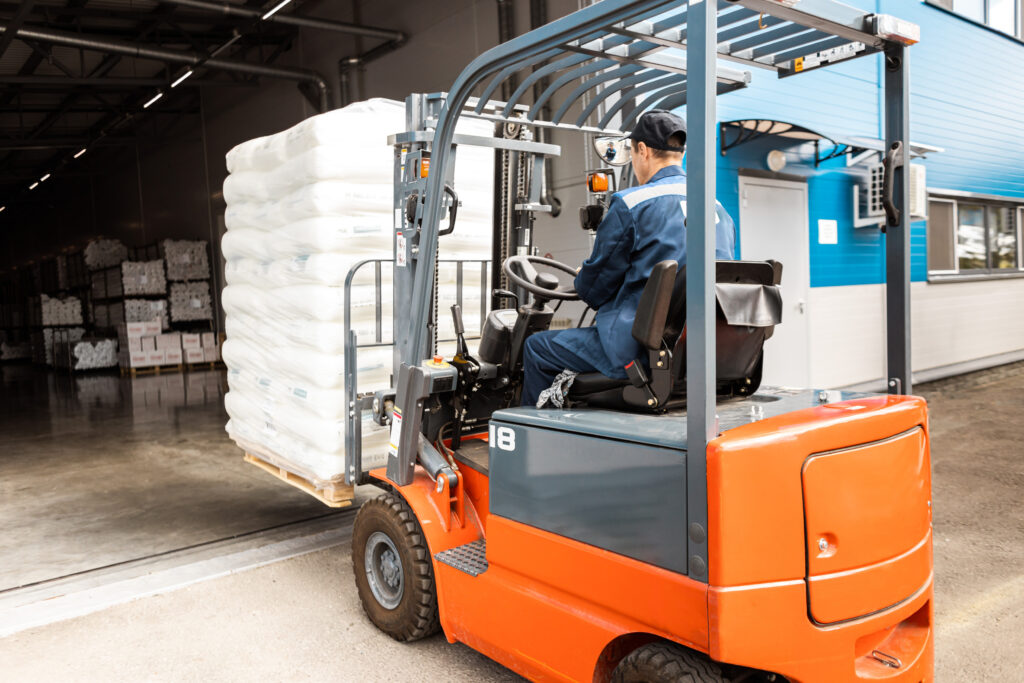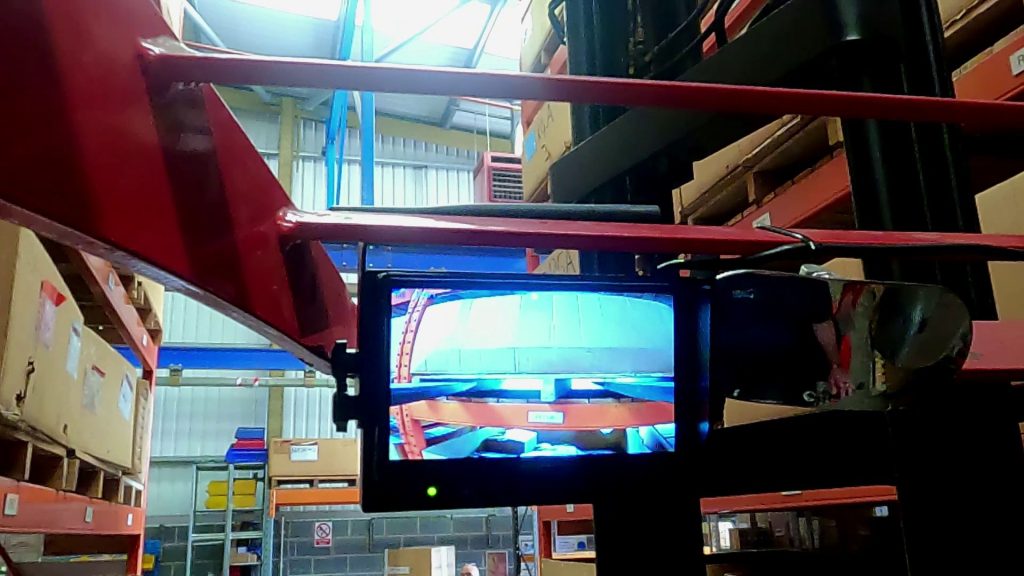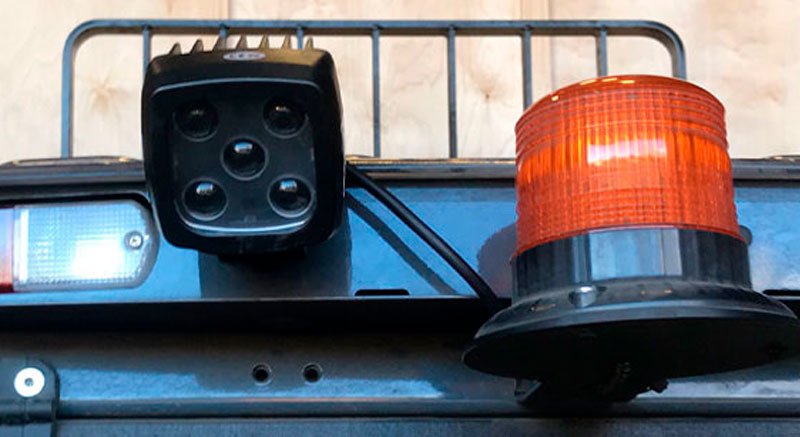Across the globe, warehouse operations continue to face pressure to improve efficiency, reduce costs, and maintain a safe working environment. In these high-demand logistics and storage facilities, warehouse traffic safety is vital, not just for protecting forklift drivers and pedestrians but also for ensuring operational efficiency. With moving machinery, tight spaces, and human activity occurring simultaneously and often in close proximity, effective warehouse traffic control can mean the difference between a streamlined operation and a costly accident.
One of the most significant risks within these environments stems from forklift traffic. With their size, limited visibility, and constant movement needed to optimise productivity, forklifts are a top contributor to serious workplace accidents to personnel, goods, and building infrastructure. Improving forklift traffic control is therefore a vital part of any warehouse traffic management strategy.
Understanding The Challenges Of Warehouse & Forklift Traffic
Warehouses are dynamic and often high-risk environments when it comes to internal traffic. Hazards such as pedestrian and vehicle interaction, blind spots, congestion at intersection points, and poor visibility all increase the potential for accidents. Forklifts frequently move around corners, between narrow aisles, or reverse with limited line of sight, heightening the danger level and increasing the risk of a collision.
The consequences of poor warehouse traffic management extend beyond just safety; inefficient layouts and uncontrolled vehicle movement can result in damaged goods, slowed operations, and, in worst-case scenarios, serious injuries or fatalities. The costs associated with these incidents can include insurance claims, legal liability, operational and machinery downtime, and damage to goods and the company’s reputation.
1. Design Effective Traffic Flow Systems
One of the most efficient ways to enhance warehouse traffic safety is by designing clear and effective traffic flow systems. This includes implementing:
- One-way traffic lanes to minimise head-on collisions
- Segregated lanes to separate pedestrian paths from vehicle routes
- Designated crossing zones that are clearly marked and visible
Not only do these systems reduce the likelihood of collisions, but they also streamline operations by eliminating unnecessary congestion and delays. Implementing an effective traffic flow design supports both safety & productivity and ultimately creates a highly organised warehouse environment where every traffic and personnel movement is considered and given its own defined zone.

2. Control and Monitor Forklift & Material Handling Equipment Speed In The Warehouse
When managing a fleet of forklifts or other material handling equipment (MHE) in a warehouse environment, speed is one of the most controllable risk factors. By integrating technologies that enforce appropriate speed limits across various critical zones, operators can maintain better control. This is particularly impactful in areas with higher pedestrian activity or where tight turns and blind spots occur.
Transmon Engineering’s recent article on managing forklift speed limits highlights the potential risks of high-speed activities and explains how enforced speed restrictions significantly reduce the chances of incidents. To overcome these challenges, their intelligent speed control systems allow for customisable speed limits, ensuring that forklifts move around the facility at safe speeds based on real-time warehouse conditions.
Going a step further, radar speed zoning enables forklifts to automatically adjust their speed depending on whether they are working Indoors or Outdoors. Building antennas can be used to zone specific areas of the warehouse and are typically deployed at busy intersections, doorways, and walkways. Highly adaptable, building antennas are ideally suited for lift height zone alerts, designed to safeguard high-level infrastructure such as overhead services or mezzanine floors. These technologies add an intelligent layer to forklift traffic control, allowing speed to be governed by proximity to hazards or pedestrian zones.
3. Reduce Blindspot Risks & Enhance Operator Visibility
Many warehouse accidents occur simply because forklift operators cannot see people, goods, or other vehicles approaching; therefore, enhancing forklift driver visibility to identify and avoid potential hazards is key to improving warehouse traffic safety.
Transmon Engineering offers camera systems that include Driver Aid and Pedestrian Alert Cameras. These intelligent systems help operators detect obstacles and people in blind spots, especially when reversing, navigating tight corners, or emerging from narrow aisles. The additional visibility enables safer decision-making and reduces the drivers’ reliance on auditory or mirror-based awareness.

4. Collision Avoidance Systems To Prevent Warehouse Traffic Incidents
Technology plays an increasingly important role in warehouse traffic control. Advanced collision avoidance systems add a proactive layer of safety by alerting forklift operators to nearby hazards.
Transmon Engineering’s proximity warning systems use innovative sensors to detect people or vehicles, which trigger visual and audio alerts. More advanced solutions, such as the Active Collision Avoidance System (ACAS), go beyond deploying visual and audio alerts by taking automatic corrective action if a collision is imminent. Critically, these systems remove the sole reliance on the operator’s response time, reducing the chance of human error and a collision.
5. Improve Visibility With Warning Lights
When implementing a forklift traffic control strategy, sometimes the most straightforward solutions are also the most effective. Easy to deploy, vehicle-mounted warning lights create clear visual cues that alert nearby workers and other operators of a forklift’s presence. They are particularly effective in noisy warehouses or specific areas with a high level of visual obstructions.
Transmon Engineering’s suite of warning lights is designed to enhance warehouse traffic safety by projecting visible light zones around the vehicle or flashing lights when movement close by is detected. This improves overall driver awareness and reduces the risk of pedestrian collisions, particularly in busy or dimly lit environments.

Building A Complete Warehouse & Forklift Traffic Safety Strategy
When addressing warehouse traffic to improve forklift and pedestrian safety levels, warehouse operators should focus on creating an integrated, layered approach, rather than hoping one solution will provide the answer. From route planning and speed control to advanced visibility and collision prevention systems, each technology tool plays a critical role within a comprehensive warehouse traffic management strategy.
By combining advanced, intelligent technologies such as camera systems, warning lights, and proximity sensors, with speed and lift height zoning, you can create a safer and more responsive warehouse environment where the risk of accidents is minimised, and material handling productivity remains optimised.
Transmon Engineering is fully committed to helping warehouse operations of all sizes implement industry-leading MHE and forklift safety solutions to meet today’s safety standards, and beyond.
Get in touch with us today to discover how we can help elevate your warehouse safety strategy, finding the right balance between safety and productivity. Contact one of our experts today by calling 0116 260 4200.


